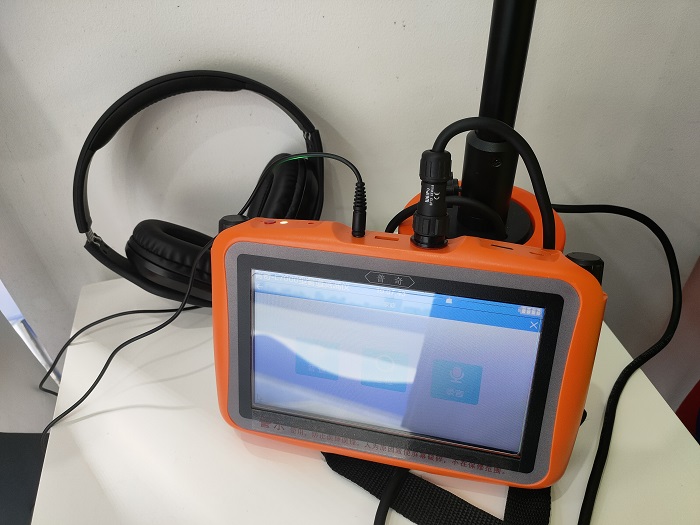In modern homes and commercial buildings, underfloor heating systems are increasingly favored for their comfort and energy efficiency. However, the maintenance of the underfloor heating system is also a problem that should not be ignored, especially the water leakage problem, which not only affects the usage effect, but also may cause damage to the building once it occurs. In order to timely and accurately detect underfloor heating leaks, the pqwt water detector has emerged as a powerful assistant in solving the problem of underfloor heating leaks.

Principle: Acoustic vibration detection
The pqwt water detector is based on the principle of acoustic vibration detection, i.e. it analyzes the sound vibrations produced during water leakage to determine the location of the leakage point. When a break occurs in a heating pipe, the pressurized water rubbing against the pipe wall generates specific acoustic vibrations. These vibrations propagate through the pipe above the ground and are captured by the detection instrument. The instrument's built-in sensors are able to receive these sound signals with high sensitivity and, through internal algorithmic processing, amplify the weak sound of water leakage and transform it into recognizable signals, thus realizing the precise location of the leakage point.
Procedure
The steps for detecting a water leak with the pqwt water detector are relatively simple, but require the operator to have a certain degree of specialized knowledge and operating skills. The following are the basic steps:
1. Prepare tools: First, make sure that the detection instrument is fully charged, and prepare headphones or other audio output devices in order to better receive sound signals.
2. Understand the layout of the pipeline: before the test, as far as possible to understand the layout of the floor heating pipeline and direction, in order to be more targeted detection.
3. Begin detection: Place the sensor of the pqwt water detector close to the floor or wall and move it slowly along the direction of the floor heating pipes. At the same time, listen to the sound signals emitted by the instrument through headphones.
4. Analyze the sound characteristics: When the instrument detects a water leak, it will emit a clear sound signal. The operator needs to carefully analyze the characteristics of these sound signals, such as frequency, intensity, etc., in order to determine the specific location of the leak.
5. Marking the water leakage point: Once the location of the water leakage point is determined, mark it immediately with a marker or other tools for subsequent repairs.
Application Advantages
pqwt water detector has significant advantages in floor heating water leakage detection:
1. Non-destructive testing: Acoustic vibration detection belongs to the category of non-destructive testing, and will not cause any damage to underfloor heating pipes and buildings.
2. Efficient and accurate: through high sensitivity sensors and advanced signal processing algorithms, pqwt water detector can quickly and accurately locate the water leakage point, which saves a lot of labor and time costs.
3. Widely applicable: pqwt water detector is suitable for all kinds of underfloor heating systems, including family homes, commercial office buildings and hotels. Whether it is a newly installed underfloor heating system or an old one, it can be effectively tested.
4. Convenient for maintenance: the detection instrument is simple to operate and easy to carry, which is convenient for maintenance personnel to carry out rapid detection on site.
Underfloor heating water leakage detection is an indispensable part of underfloor heating system maintenance. pqwt water detector plays an important role in underfloor heating water leakage detection with its non-destructive, efficient and accurate features. By mastering the principle and operation of acoustic vibration detection, we can better utilize this tool to ensure the normal operation of the underfloor heating system and the safety of the building.








